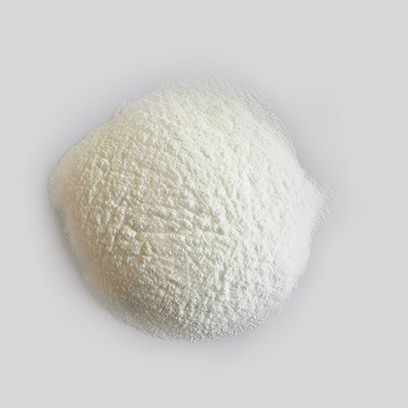
Nov . 07, 2025 10:55 Back to list
Titanium Dioxide TiO2 Rutile SR-2377 Powder CAS13463-67-7 UV
Rutile TiO2 You Can Actually Rely On: Field Notes on SR‑2377
If you spend time around coatings labs or masterbatch lines, you hear the same refrain: consistency beats everything. That’s why the TITANIUM DIOXIDE RUTILE SR-2377 INDUSTRY TIO2 POWDER CAS No.13463-67-7 keeps popping up in real production talk. Originating from Jindi Industrial Park, Dacheng County, Langfang City, Hebei Province, it’s a clean, bright rutile-grade TiO2 engineered for weatherable coatings, plastics, and inks—where hiding power and dispersion are the day-to-day battles.

What’s happening in the TiO2 market (and why it matters)
Two things shape demand right now: tougher VOC limits pushing waterborne systems, and buyers looking for stable blue undertone plus outdoor gloss retention. Actually, a third: supply reliability. Many customers say SR‑series rutile grades feel “comfortable” on line—less fiddling with dispersants and fewer color swings lot-to-lot. To be honest, that kind of quiet stability is underrated.

Technical snapshot (typical values)
| Property | SR‑2377 (Rutile) |
| Crystal form | Rutile, surface-treated (Al2O3/ZrO2 + organic) |
| TiO2 content | ≈ 93–95% |
| Volatiles at 105°C | ≤ 0.5% |
| pH (aqueous slurry) | 6.5–8.5 |
| Oil absorption | ≈ 16 g/100 g |
| Residue (45 μm) | ≤ 0.02% |
| L whiteness | ≈ 97.5 (real-world use may vary) |
| Tinting strength | ≈ 118 vs. standard = 100 |
| Density (specific gravity) | ≈ 4.1 g/cm³ |
| Recommended systems | Waterborne/solvent coatings, masterbatch, PVC profiles, inks |
Where TITANIUM DIOXIDE RUTILE SR-2377 INDUSTRY TIO2 POWDER CAS No.13463-67-7 tends to shine is dispersion: fast Hegman development and a calm viscosity profile. In plastics, that usually means you can shave loading by a notch and keep opacity—surprisingly often in PE film and PP masterbatch.
Process flow and QA

Materials: selected ilmenite/rutile feedstock → chloride-route oxidation of TiCl4 → micronization → Al/Zr inorganic treatment → organic post-treatment → controlled drying/milling → dust-tight packing.
Methods & tests: ISO 591 classification; pigment tests per ISO 787 and ASTM D476 (brightness, tinting strength, residue, pH, oil absorption). Batch COAs and retained samples are standard. Weathering checked against QUV/EMMAQUA baselines where applicable. Typical coating service life outdoors: ≈ 7–12 years in architectural binders (obviously binder/film-build/climate matter).
Vendor landscape (typical benchmarks)
| Parameter | SR‑2377 | Global A (R‑706) | Global B (2310) |
| Undertone | Slight blue | Blue | Neutral–blue |
| Weatherability | High (Al/Zr treated) | High | Medium–High |
| Waterborne dispersion | Fast | Fast | Moderate–Fast |
| Cost position | Value tier | Premium | Premium |
Applications, customization, and real feedback
Use cases: architectural and industrial coatings (low‑VOC, waterborne alkyds, acrylics), powder coatings, PVC profiles and siding, PE/PP masterbatch, inks and primers. Loading: coatings 10–25% by volume; plastics 1–6% TiO2 depending on film thickness and opacity targets.
Customization: hydrophilic vs. hydrophobic surface finish; tighter sieve control; pre-dispersed slurry for waterborne lines; packaging in 25 kg bags or ≈1,000 kg big bags. Many customers say the “plug-and-run” feel reduces let-down issues—less microfoam and quicker gloss build.

Case notes (short and practical)
- Coatings: a coil‑coating line swapped in TITANIUM DIOXIDE RUTILE SR-2377 INDUSTRY TIO2 POWDER CAS No.13463-67-7 and held ΔE ≤ 0.8 after accelerated QUV cycles compared with ΔE ≈ 1.1 previously, same binder, same grind time.
- Plastics: PE film maker trimmed TiO2 loading from 4.0% to 3.5% while maintaining opacity target (contrast ratio 98%)—crediting finer dispersion and undertone.
Compliance, safety, and standards
Conforms with ISO 591 rutile classification; typical quality systems: ISO 9001/14001; REACH/ROHS statements available on request. Handle TiO2 dust responsibly; follow local occupational exposure limits. Classification guidance per EU CLP applies to respirable dust hazards.
Authoritative citations
- ISO 591‑1:2019 Pigments—Titanium dioxide. https://www.iso.org/standard/73944.html
- ASTM D476 Standard Classification for Dry Pigmentary Titanium Dioxide Products. https://www.astm.org/d0476-14.html
- ISO 787 series—General methods of test for pigments and extenders. https://www.iso.org/committee/47924.html
- EU CLP Regulation (EC) No 1272/2008—TiO2 classification updates. https://eur-lex.europa.eu
- REACH registration guidance for TiO2 (ECHA). https://echa.europa.eu/substance-information
-
Essential Guide to Calcium Powder Quotes – Pricing, Quality & Global Insights
NewsNov.24,2025
-
Reliable Anatase TiO2 Pigment Quotes for Sustainable Industry Use | CQ Titanium Dioxide
NewsNov.24,2025
-
Understanding Lithopone B311 Powder Quotes – Market Insights & Applications
NewsNov.23,2025
-
Reliable 30-50nm TiO2 Powders Quotes for Advanced Industrial Use | CQTitanium
NewsNov.23,2025
-
Comprehensive Guide on Lithopone Red Pigments Quotes | Industry Insights & Pricing
NewsNov.22,2025
-
Comprehensive Insights into the Lithopone Market: Global Trends & Applications
NewsNov.22,2025
